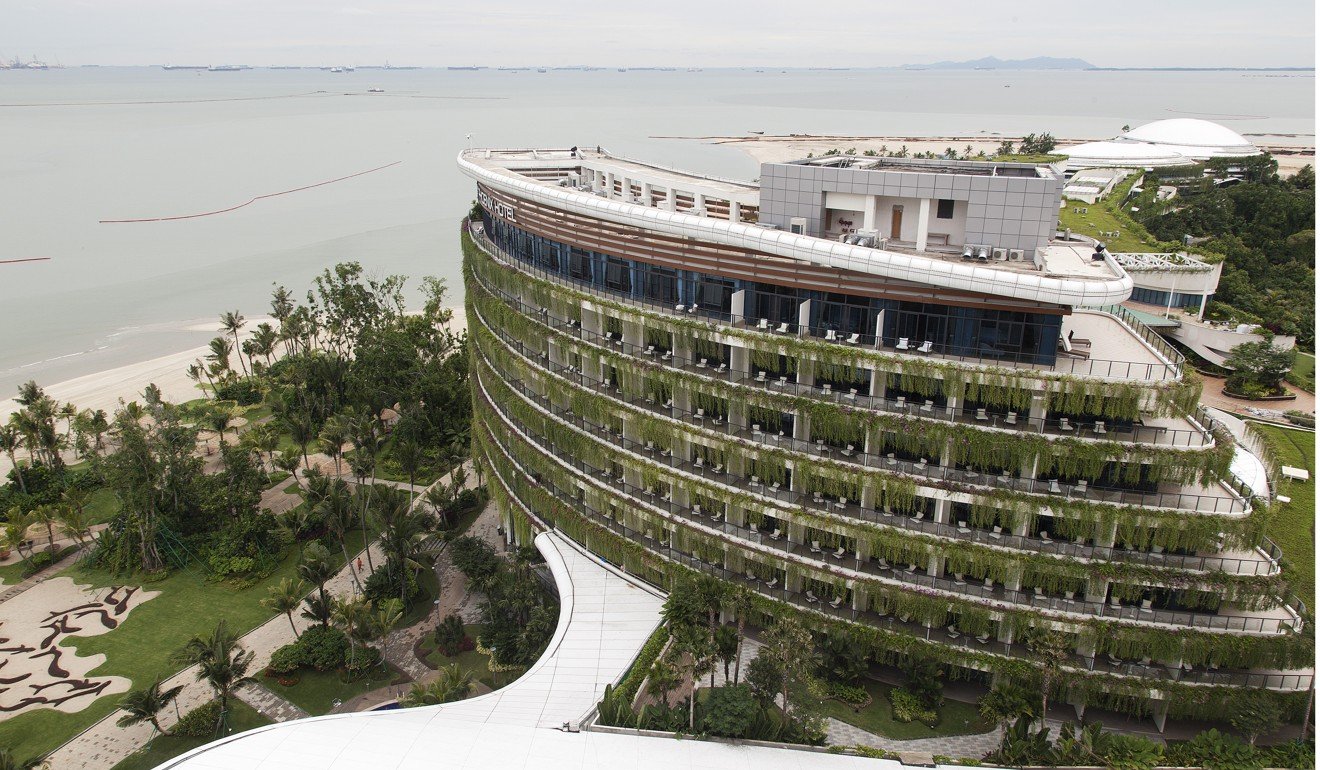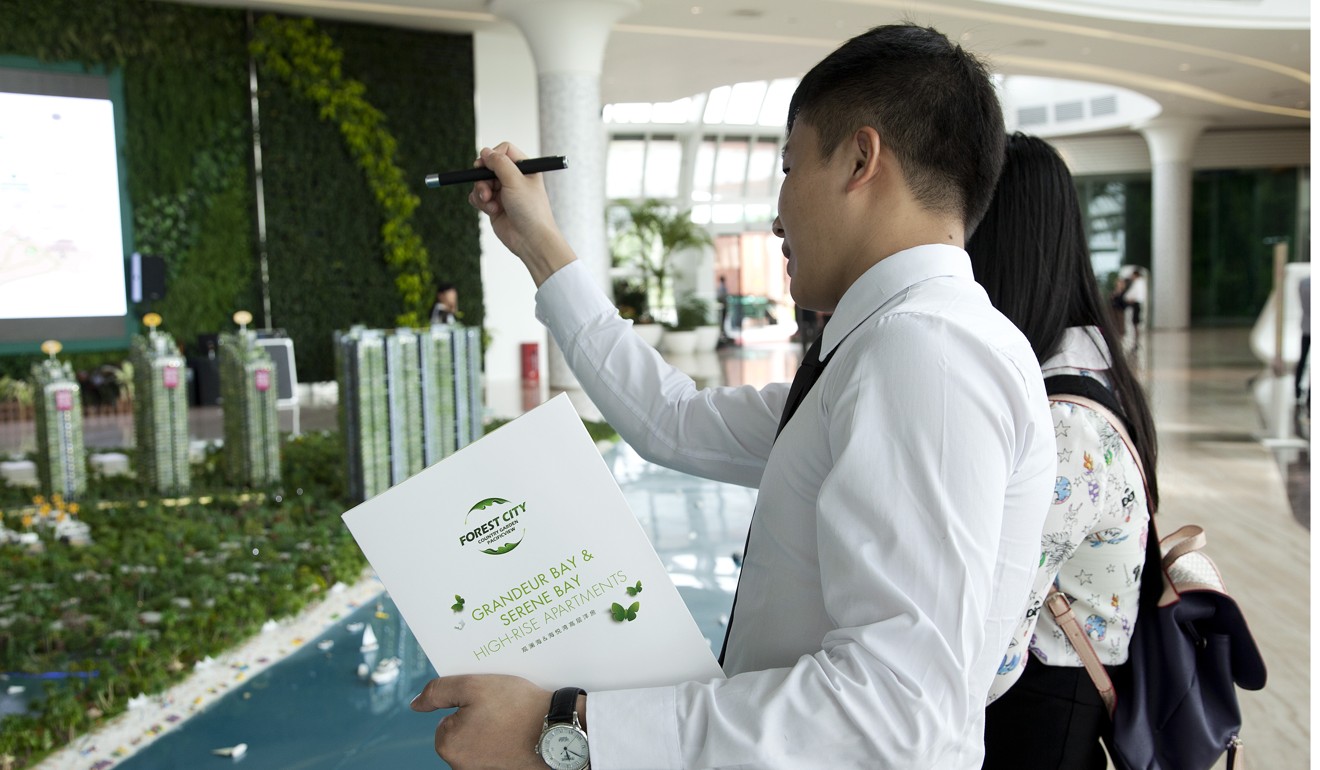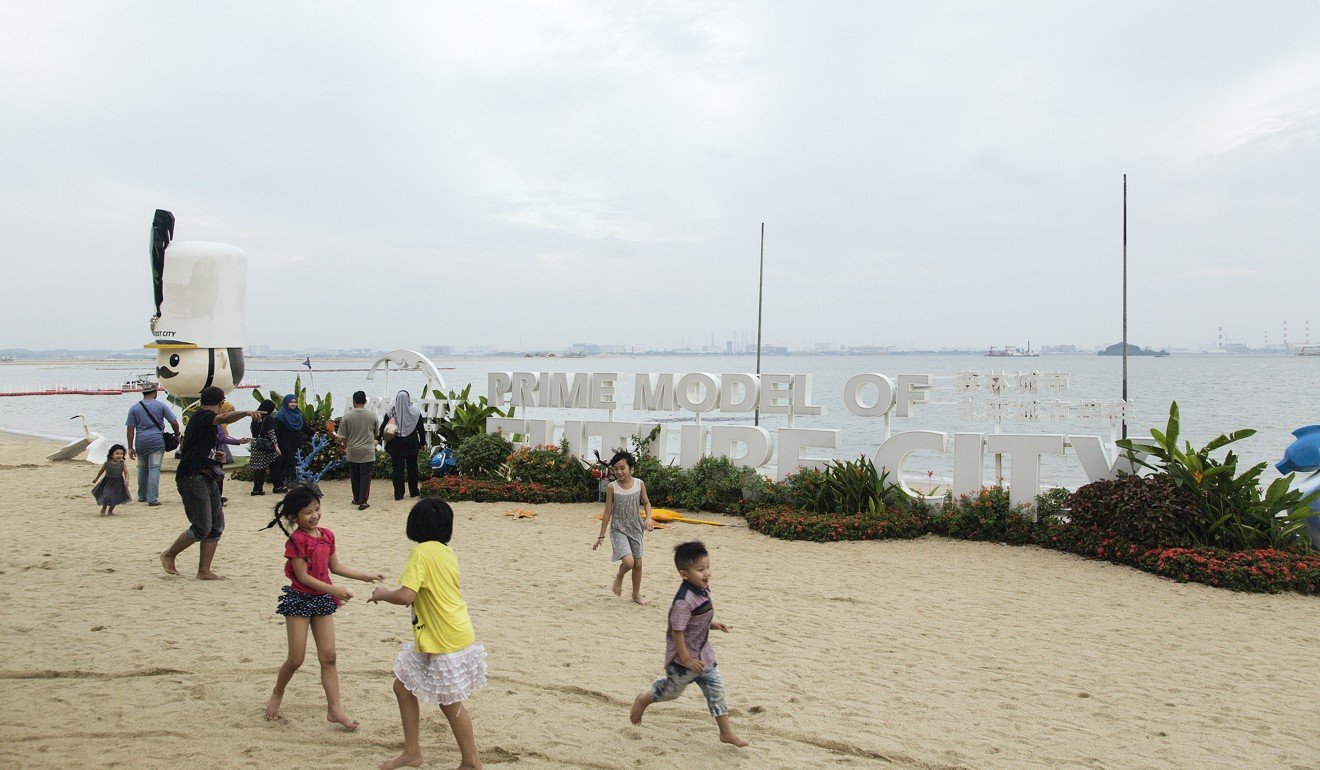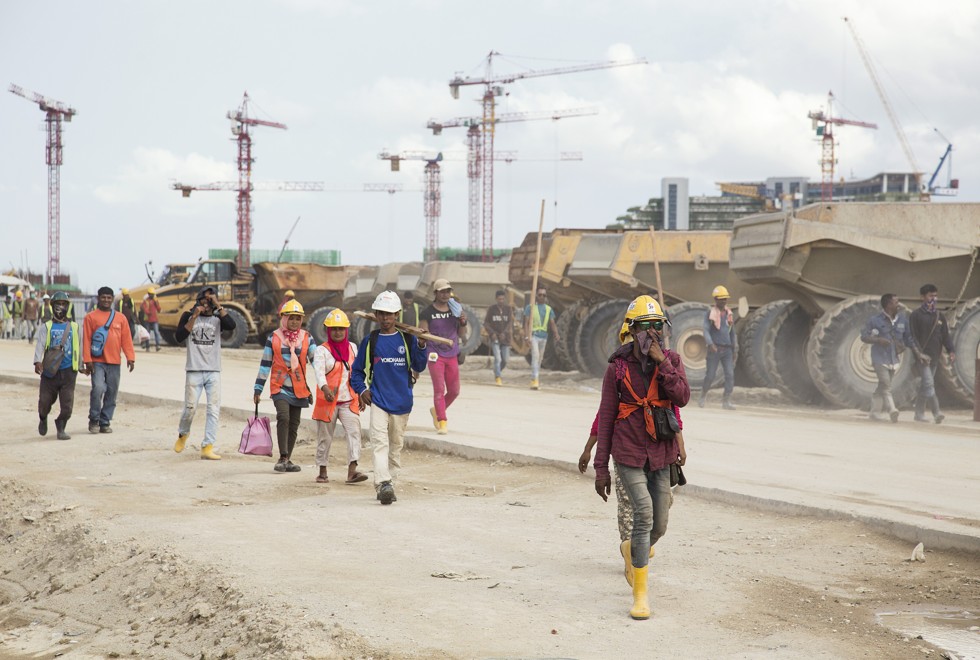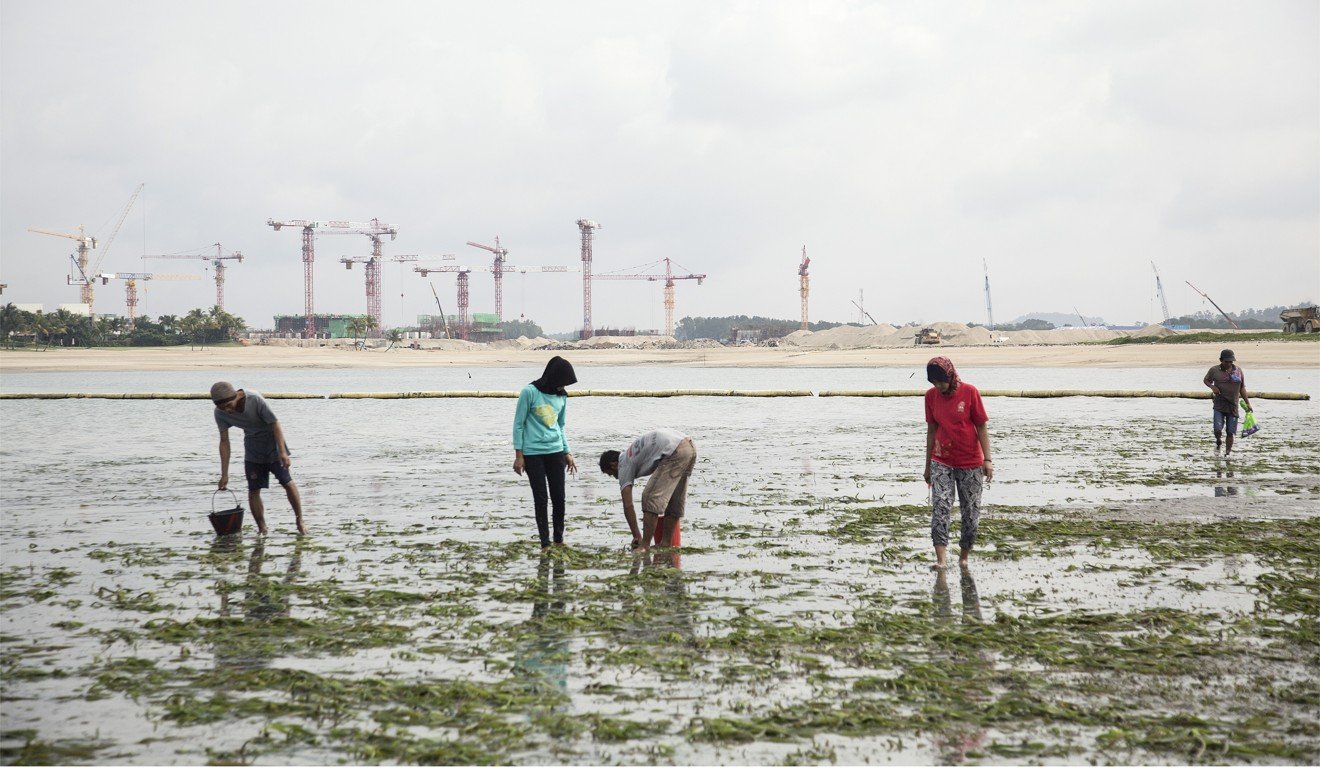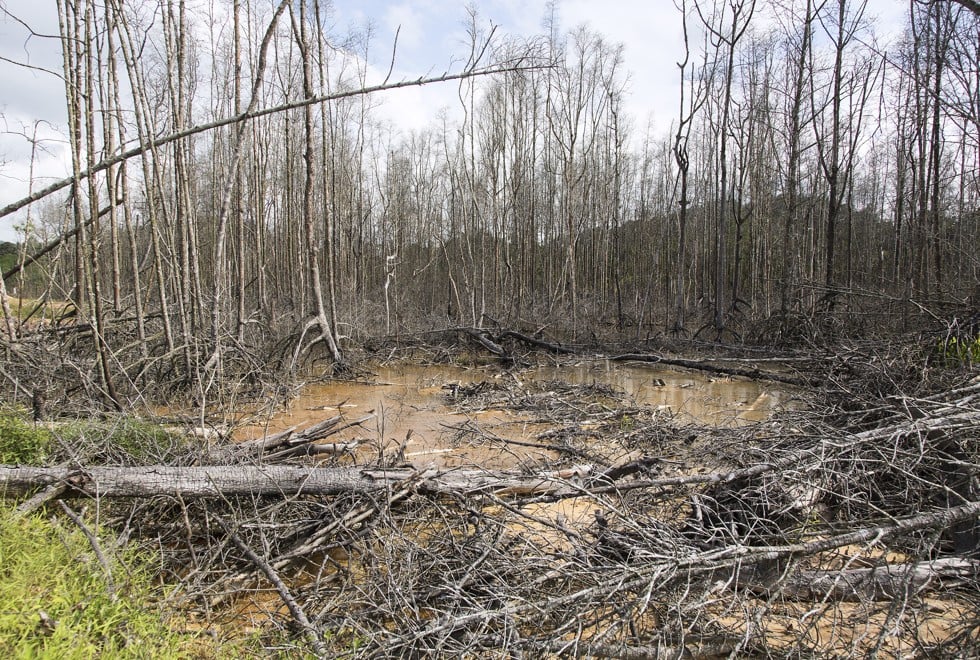Chinese flood Johor in Malaysia to invest in US$100b ‘eco city’ billed as the ‘next Shenzhen’

South China Morning Post
Lured by its proximity to Singapore, investors from China are making a beeline for southern Malaysia, where an ambitious US$100 billion real-estate development called Forest City is changing the face of the landscape
The moment I set foot in the immigration building, I am approached by two customs officers in army fatigues, buzzing walkie-talkies strapped at the shoulder. Before I start worrying about what’s in my backpack, they address me in a friendly, almost conspiratorial tone. My jaws unclench as I realise the object of their concern – the queue. It’s long. Frighteningly so.
I am at the Tuas checkpoint, on the southern side of the Malaysia-Singapore border, waiting to leave the Lion City for a visit to the state of Johor. It’s Friday afternoon, probably the worst time of the week for such an undertaking, but the queues have been made significantly worse of late by an overwhelming number of tourists from China crossing the Johor Strait.
“We’re not really prepared for such waves of people,” says one of the officers. The immigration building is modern and spacious, with several counters open, but looking at the queues, I understand what he means. “We’ll let you out through this other lane, you’ll just have to swipe your passport at the machine,” he continues, sotto voce, pointing at an empty lane reserved for Singaporean citizens.
I feel like I’m being smuggled out, and I can’t help blushing when I look again at those desperate faces sulking their way through never-ending lines. One swipe, and I’m out of Singapore.
My luck lasts only so long, though. Once at the tiny, disorganised Malaysian checkpoint, there’s no escaping the body-to-body shuffle. This time, no officer comes to my rescue. The only way to cut the queue would be to go to Forest City.
A residential block in Forest City. Picture: Edward Hursta
The grandest real-estate development under way in Johor, the “next Shenzhen” is just 10 minutes by car from the Malaysian checkpoint and will one day cover what is now only sea, mangrove wetlands and fishing villages. The 20 sq km city, straddling four man-made islands, will eventually accommodate up to 700,000 residents.
Launched in 2014, the US$100 billion mega-project is administered by Country Garden Pacific View (CGPV), a joint venture between Guangdong-based, Hong Kong-listed Country Garden, China’s third largest homebuilder, and local partner Esplanade Danga 88. It is of such a scale – and of such strategic importance to up-and-coming Johor – that everything is being done to ensure potential investors can easily reach the show gallery. At the Malaysian checkpoint, a “privilege lane” has been set up just for visitors to Forest City, with an accelerated stamping process, and direct shuttle buses wait outside.
But I’m expected elsewhere first, so no privilege lane for me. I shoot envious glances that way, though, and see that most of the people in line are holding a Chinese passport. There are a few Singaporean and Middle Eastern visitors as well; word about Forest City has obviously spread far and near.
To drive around southern Johor is to witness a landscape in the midst of radical transformation. Roads are being widened, hills levelled, wide patches of secondary forest and mangrove chopped down to make way for more transport infrastructure.
Every few kilometres comes a new, nondescript urban area in which seafood restaurants and massage parlours abound, many promoted in neon-bright Chinese characters. Scattered along the coast, long billboards mark the boundaries of ongoing and upcoming developments. On all of them, the same images of luxury, Western-inspired community living, of perfect harmony between man and nature.
Potential clients view a model of Forest City at the development’s sales office in Johor. Picture: Edward Hursta
In 2006, Johor’s southern coastline and part of the hinterland – in all 2,200 sq km, more than one-tenth of the state – were designated as a special economic region. The rising conurbation, which is modelled after the Pearl River Delta Economic Zone and the success story of Shenzhen, is known as Iskandar, the name Arabs call Alexander the Great, the empire builder from whom many Muslim monarchs in Asia once claimed distant, and wishful, descendancy.
Johor is itself a sultanate, one of the richest of nine in Malaysia. The current sultan, Ibrahim Ismail, is a well respected, charismatic figure whose inherited stance of “Johor first, Malaysia second” ensures his popularity among locals while raising a few eyebrows in Putrajaya, the country’s federal capital. He is also a shrewd businessman who owns a number of companies, in various sectors, one of which is Esplanade Danga 88.
Touted as the “eco-smart city of the future”, Forest City was envisioned by the sultan himself, as part of “a balanced development where the people of Johor will benefit”.
When I finally get there, like most visitors to its ultra-modern sales complex, I am left speechless by the man-sized scale model on display. A collection of spacecraft-shaped towers – all draped in green plastic: the so-called “vertical greenery” – standing alongside private villas, glitzy shopping malls, international schools and state-of-the-art production facilities. An Avatar-like world of pharaonic proportions, all built from scratch.
Forest City’s show gallery is designed to be both entertaining and educational. While adults are led along to view its various exhibits and mock-up flats by chatty, kebaya-clad sales ladies, their children jump about on trampolines under the stern gaze of Nepali Gurkha guards standing at attention. Forest City also sports a five-star hotel, the Phoenix, and a shopping lane, as well as its own mascot, Mr Forest, a moustachioed grenadier with white bearskin and green coat who is depicted in a number of 10-foot statues and is a hit with selfie takers young and old.
A salesman with a potential client at the development’s sales office in Johor. Picture: Edward Hursta
On a giant screen, testimonials by Chinese celebrities and announcements of awards such as the “Oscars for Human Settlements” look unconvincing to this non-resident of the Middle Kingdom. But the verbal sales pitch is well-calibrated, with a strong emphasis on the already sold units and the proximity of Forest City to Chinese-speaking Singapore – the project’s ace card as far as most investors are concerned.
The news from China earlier this year of tighter financial regulations to stem capital outflows – and the prospect of a ghost town in the making – is mentioned by the sales ladies, but is swiftly countered with a well-rehearsed mantra: “The sultan of Johor is a shareholder in this project, and you can rest assured: when the sultan wants something done, he gets it done.”
Nevertheless, Country Garden has had to shut its showrooms in China, and it’s difficult to see where else it will find the large army of investors needed to fill its many apartments.
Up to 800 people a day walk through the glass doors that connect the shopping-mall-style parking area to the sales gallery, according to news reports, more at weekends.
Beyond the sales gallery and across manicured gardens is a landscaped beach, which faces Singapore. When I visit, a number of Malay families, neatly dressed in traditional clothing, are strolling on the sand and chatting on benches. Children are playing among the crab and sea lion statues while their parents take selfies; this is a picture-perfect opportunity, and it seems to hardly matter that all this may soon be off-limits to the general public.
Malay families on a beach near Forest City, the moustachioed mascot of which is visible in the background. Picture: Edward Hursta
I’m invited to join Faizal, Idris and their friends for dinner. Faizal’s house is opposite the access road to Forest City’s construction site. At my request, Faizal first takes me for a spin on a dirt road inside the loosely guarded building site.
“It is good for Johor,” Liza, 21 and on the beach, says with excitement and no small amount of pride. She and her family have come from Johor Bahru, the state capital, 35km away. “The project looks so amazing. I hope it brings many jobs and many foreigners here.”
Forest City has been advertised locally as the ultimate environmentally friendly, duty-free escape. Iskandar will, they are promised, become one the world’s most dynamic metropolises. Other strollers look less impressed.
“We just come here to chill and look at people,” says Faizal, 19, who rides his scooter into Forest City a few times a week with his friends from nearby Mukim Tanjung Kupang, one of the fishing villages that skirt what so far exists of the development.
“You see many Malaysians here today, but on weekdays it’s mostly Chinese from China,” says Idris, one of Faizal’s friends, lounging in a beach chair. “They’re the ones with the money.”
Entry prices in Forest City are set at about US$170,000 for a smallish, two-room apartment – cheaper than across the Strait, for sure, but expensive by Malaysian standards.
It’s about 5pm and the day shift is coming to an end. Heavy trucks travel at pace in and out of the site, a thick cloud of dust behind each. From the direction of the 20 cranes in the distance, droves of foreign workers with muddied skin and clothes head back to their quarters, some of them haggard and dragging their boots, but many of them in a jolly mood. Mainland Chinese, Bangladeshis, Indonesians, Burmese – all stick to their own kind.
Workers at the construction site. Picture: Edward Hursta
From the narrow windows of their makeshift dormitories, which are about 100 metres inside the entrance of the construction site, come the sounds of cooking and smells of curry.
“I’d rather stick to my factory job,” says Faizal, dismissively. “Let’s go, you must be hungry.”
The month-long Hari Raya celebrations are coming to an end, and Malay families are holding the last of their open-house gatherings, inviting family, neighbours and even random strangers like me to share home-cooked food and company.
In Faizal’s home, I’m offered mussels freshly harvested by his father, Muhammad, from a nearby kelong, a wooden platform that sticks out into the sea. The mussels are fleshy and juicy: boiled with lemongrass and ginger, they taste wonderful.
“Our house will be pulled down within the next 10 years,” says Muhammad. “When exactly, we don’t know.”
Local fisherfolk work the shoreline as the mega-development rises in the background. Picture: Edward Hursta
Local authorities have already paid them a visit, to inform them of the development plans for the area. Compensation will be granted by CGPV and social-housing apartment blocks in Gelang Patah, the nearest town, about 15km inland, already await them and other displaced families.
“We’ll be sad to leave this home behind, especially since we have so many memories here. But I hope that it will bring new opportunities to my children,” says Muhammad.
He works as a truck driver and supplements his income with a bit of fishing in his spare time. He says many of his fishing friends have been deeply affected by the Forest City project. The root of their trouble: the causeway built by CGPV to allow the reclamation required for the artificial islands cuts right across the Tanjung Kupang sea grass meadow, the largest of its kind in Malaysia.
“I used to go there and collect seashells and other molluscs, but there are fewer now than before,” says Muhammad. “Fish are fewer, too, and my friends have to go further out to sea to get their catch, which increases their petrol costs.”
Complaints were filed with the authorities as early as 2014 and an agreement was reached with CGPV for financial compensation for those most affected. The company also pledged to protect the sea grass meadow, which can be seen just 200 metres away from Forest City’s artificial beach. CGPV admitted in stakeholder meetings to having had no knowledge of it when reclamation work started. At the time, it had also not provided the legally required Environmental Impact Assessment, and did so only when Singapore started voicing concerns to the Malaysian government.
Forest City might boasting vertical greenery, but the real forest – the one that has thrived here for millennia and which many villagers depend on for their livelihood – is the mangrove of the Pulai River. Gazetted in 2003 as a Ramsar site, wetland designated of international importance, and spanning 9,126 hectares, the reserve, which is just a few kilometres to the west of Forest City, is now at severe risk.
Cut off from the river system, swampy plots appear in the areas being cleared to make way for Forest City. Picture: Edward Hursta
Cutting through mangroves is a two-way dirt road along which bulldozers and trucks filled with earth trundle back and forth as a Jack Nicklaus-designed golf course takes shape in the heart of the reserve, near the village of Simpang Arang. On both sides of the road, swampy plots can already be seen amid the muddy and exuberant mangrove thickets, disconnected from the river basin and being left to fester.
Three golf courses have been promised to Forest City’s investors, and the scene at this one is of devastation. Looking around, all the eco-talk I heard in the show gallery begins to sound hollow.
Faced with unavoidable change, some proactive villagers have started to consider diversifying their sources of income and to work on saving what can still be saved.
Simple ecotourism and aquaculture initiatives [mussel and oyster breeding programmes, for instance] are slowly developing into alternative means of livelihood for villagers,” says an author of studies into the situation who declines to be named. “That’s the only way parts of the region’s original ecosystem will be preserved: if it is seen as bringing potential value to the developers.”
Due for completion in 18 years (although, realistically, it’s not expected to house the full 700,000 people until 2050), Forest City will have an irreversible impact on Johor’s southern coastline and its communities. Despite temporary setbacks – such as barriers to Chinese investment, complaints from affected villagers and unwelcome independent media coverage – CGPV seems to be sticking to its ambitious schedule; at least phase 2 got under way in June, as planned, and the developer has not announced any delay in construction.
Ready cash and support from the local royals obviously help, but will they always?

